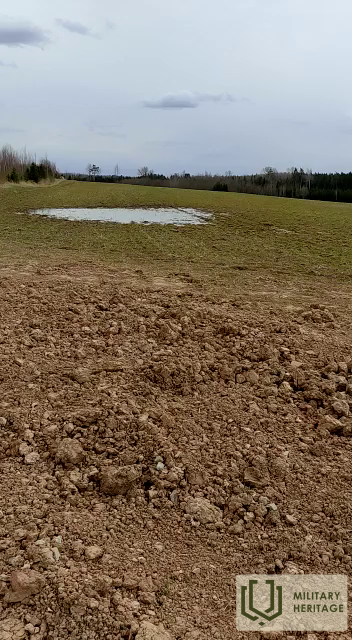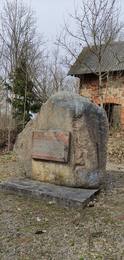Battles at Kaulači Manor in March 1945
In 1945, there was a Red Army observation post near Kaulači half-manor. Eyewitnesses recalled that fighting broke out in March 1945. This is not the first time that World War II-era graves have been found in this field.
In Remte parish, Brocēni municipality, near the "Kaulači" houses, the ashes of 23 German soldiers were exhumed in 2021. There was once a manor of the same name there, and in 1945, a Red Army observation post was located there.
Eyewitnesses recalled that the fighting began in March 1945. Mines fell, machine guns rattled, cannons boomed, civilians were caught between two front lines near Pilsblīdene. After the fighting, the eight nearest houses, including the "Kaulači" manor, burned like big fires all around.
After the war, dead German soldiers and Latvian legionnaires were left on the field. The Red Army collected its fallen. Each householder buried the dead, as best they could, because the Soviet government had said that the fallen must be buried. If not, the area would experience various diseases.
This is not the first time that World War II burials have been found in this field. During the excavations, it was discovered that four rifles, a helmet, and a soldier's cauldron lid with partially legible initials engraved on them were also thrown into the trench under the soldiers. Several German coins, a gas mask bundle, and some remnants of clothing were also brought to the surface.
https://skaties.lv/zinas/latvija/sabiedriba/remtes-pagasta-atrod-bez-vests-pazudusus-karavirus/
Related timeline
Related topics
Related objects
Monument to the 8th Estonian Rifle Corps of the Red Army
The monument to the soldiers of the 8th Estonian Rifle Corps of the Red Army is located at the ruins of the Kaulači half-manor farmhouse about 100 metres south-west of the road.
On 17 March 1945, the last Red Army offensive attempt in Courland began. The task of the 7th Estonian Rifle Division of the 8th Estonian Rifle Corps was to reach the Riga-Liepaja railway line west of Blidene station and to secure the attack of the 3rd Guards Mechanised Corps in the direction of Gaiki. By the evening of 17 March, the 354th Rifle Regiment reached the railway south of Kaulači half-manor through the forest and continued its attacks north-westwards, reaching the Pikuliai houses. In the Kaulači semi-mansion and further to the north-east were the German Burg-Stellung positions, defended by individual units of the 329th Infantry Division. Throughout the day of 18 March, attacks by the 354th Rifle Regiment continued unsuccessfully.
On the evening of 18 March the 354th Rifle Regiment was relieved by the 27th Rifle Regiment. The advance unit of the 7th Mechanised Brigade of the 3rd Guards Mechanised Corps, the 1st Motorised Battalion, with one tank company, was also to be used for the attack. By the evening of 19 March, in a concentrated attack, the Soviets had captured the Kaulači half-manor, seizing a section of the German-built defensive line on the dominant high ground.
Until the end of March 1945, attacks by the 8th Estonian Rifle Corps and the 3rd Mechanised Corps in the directions of Vikstraute and Remte continued, but without success.
During the fighting, the Kaulači half-manor housed various levels of headquarters and a memorial stone was unveiled on the site in May 1975.






